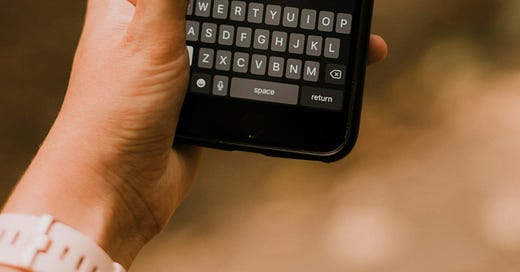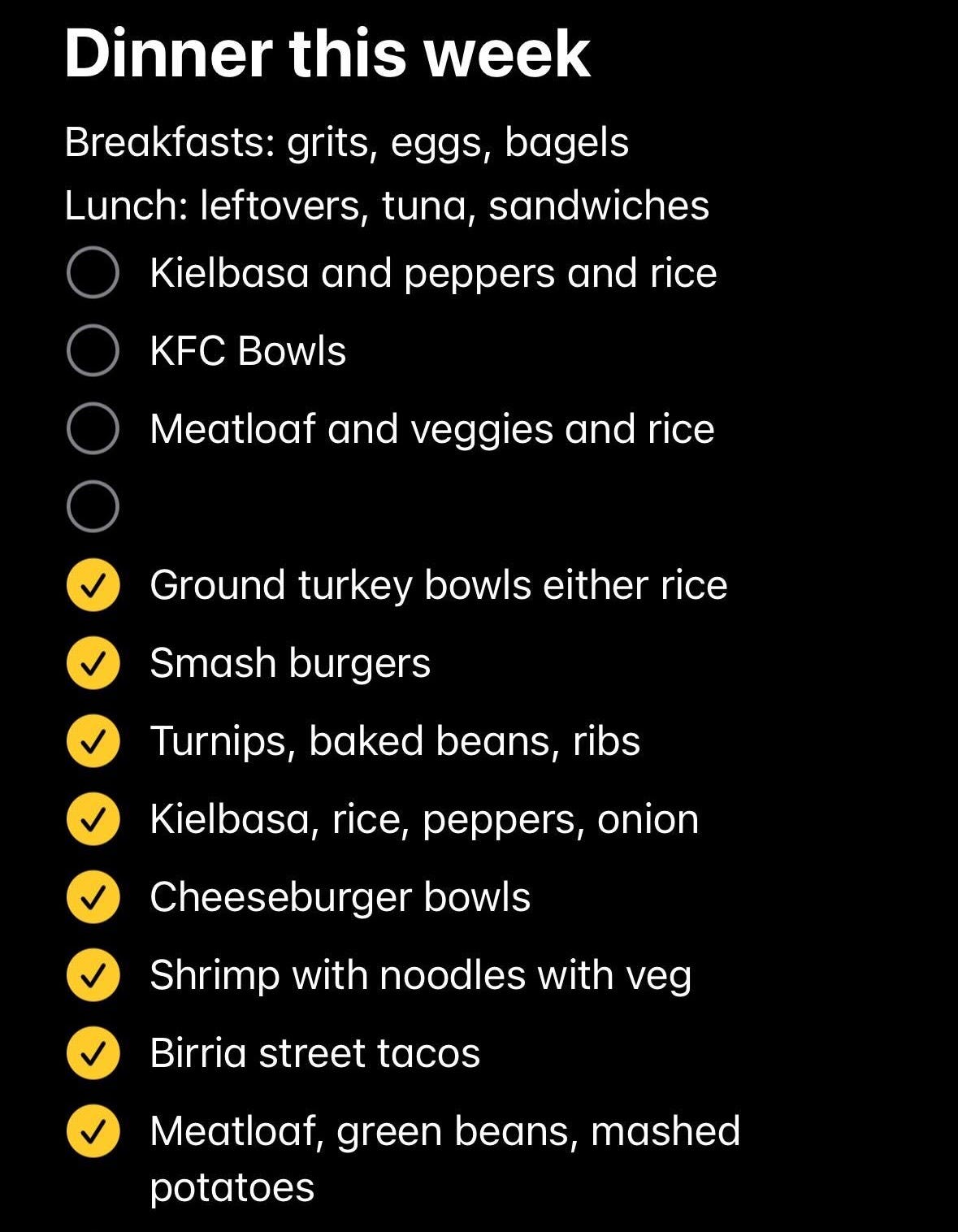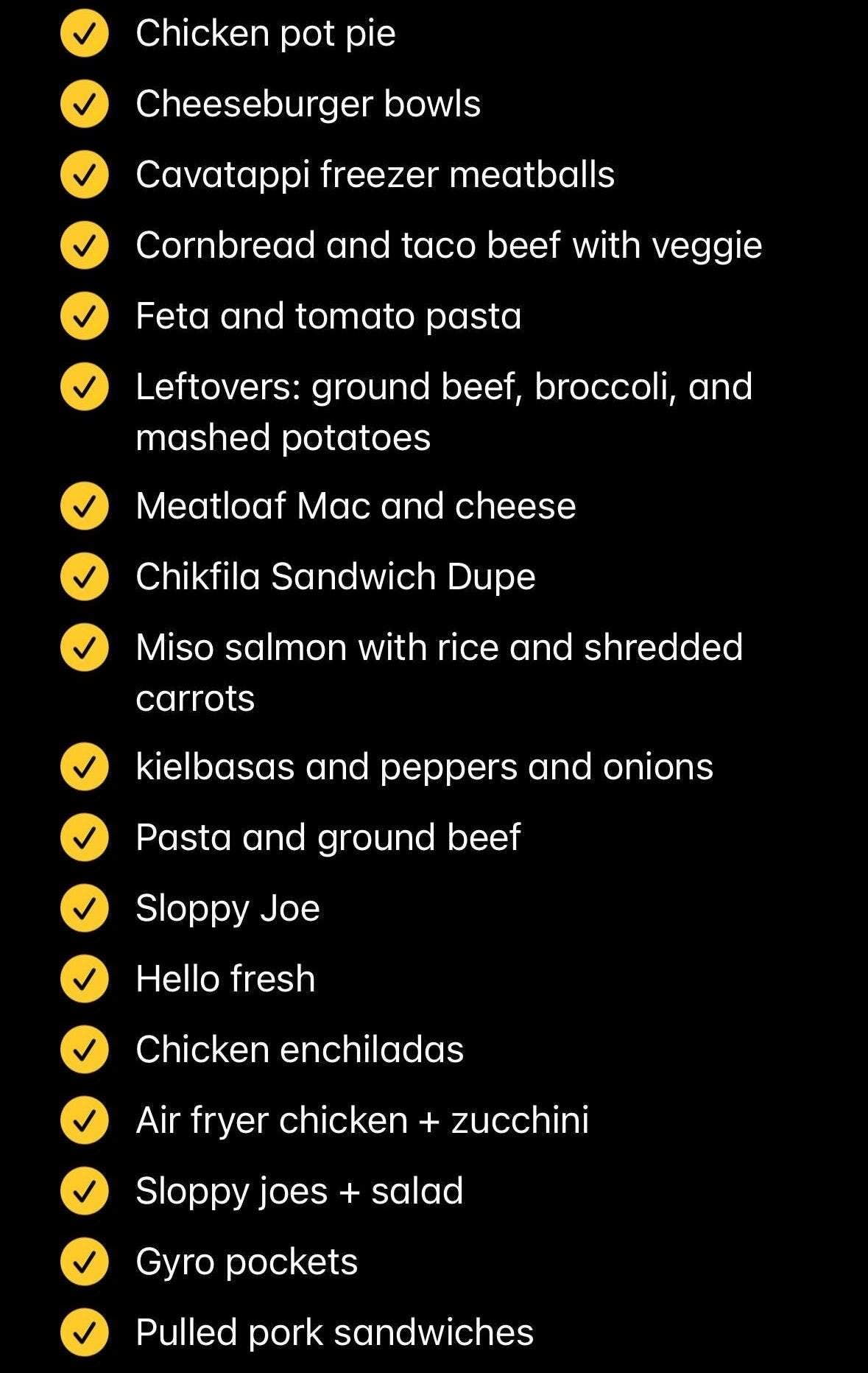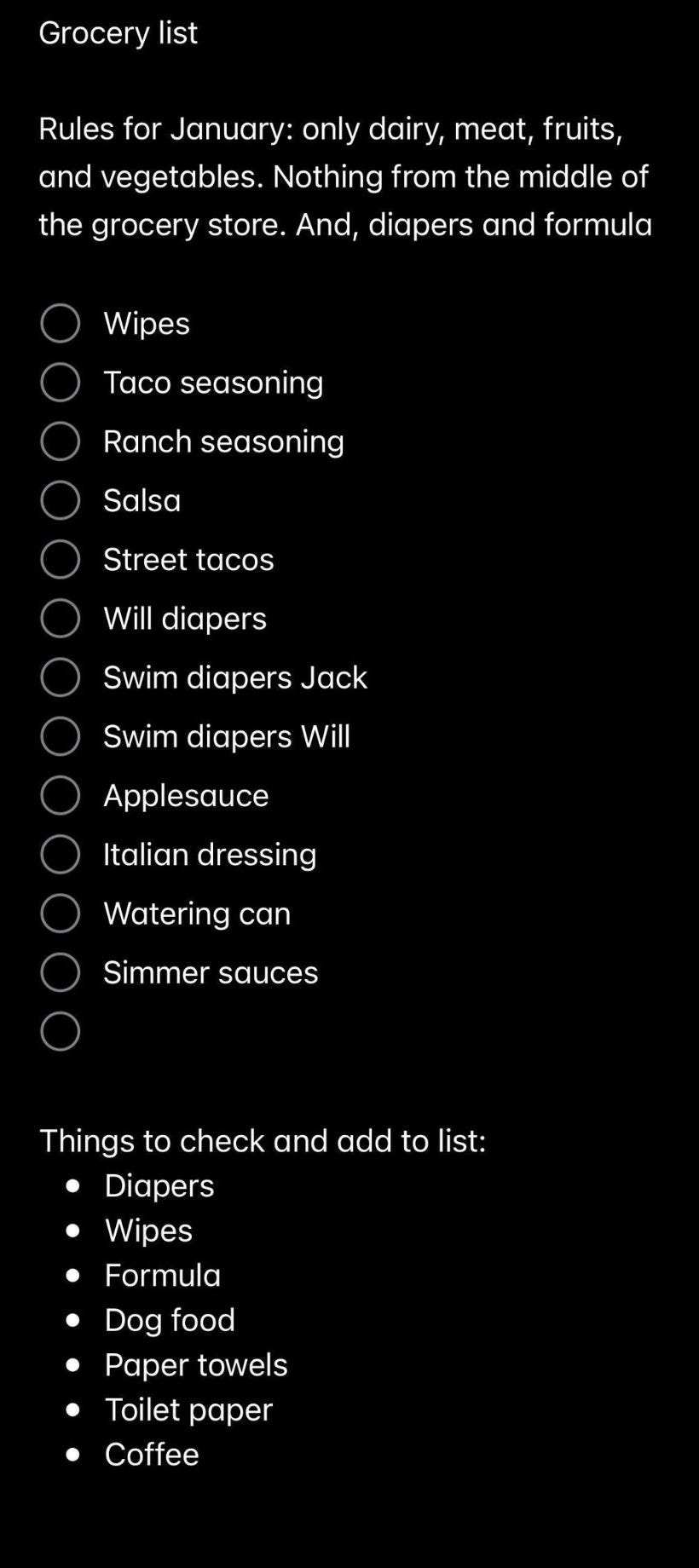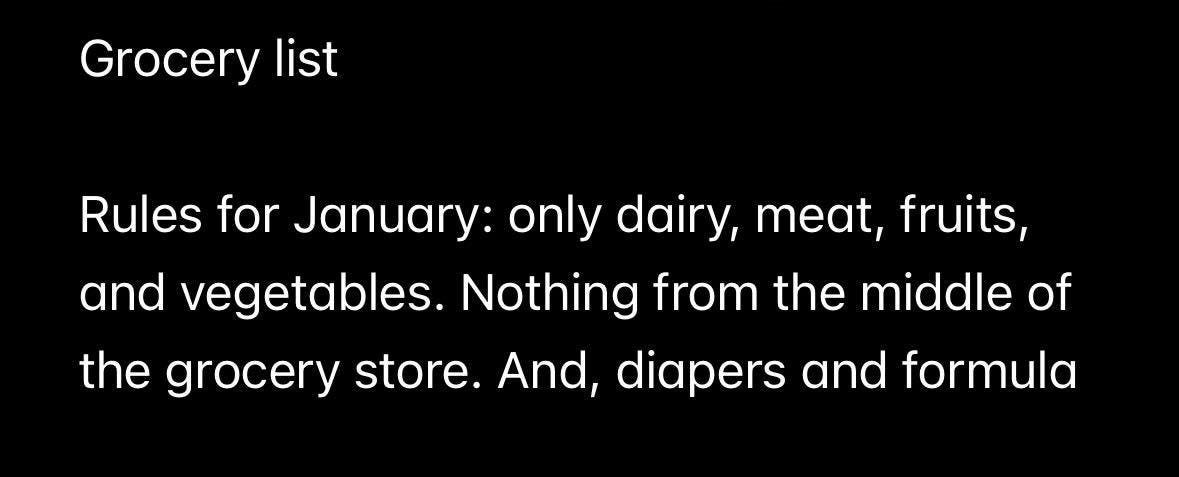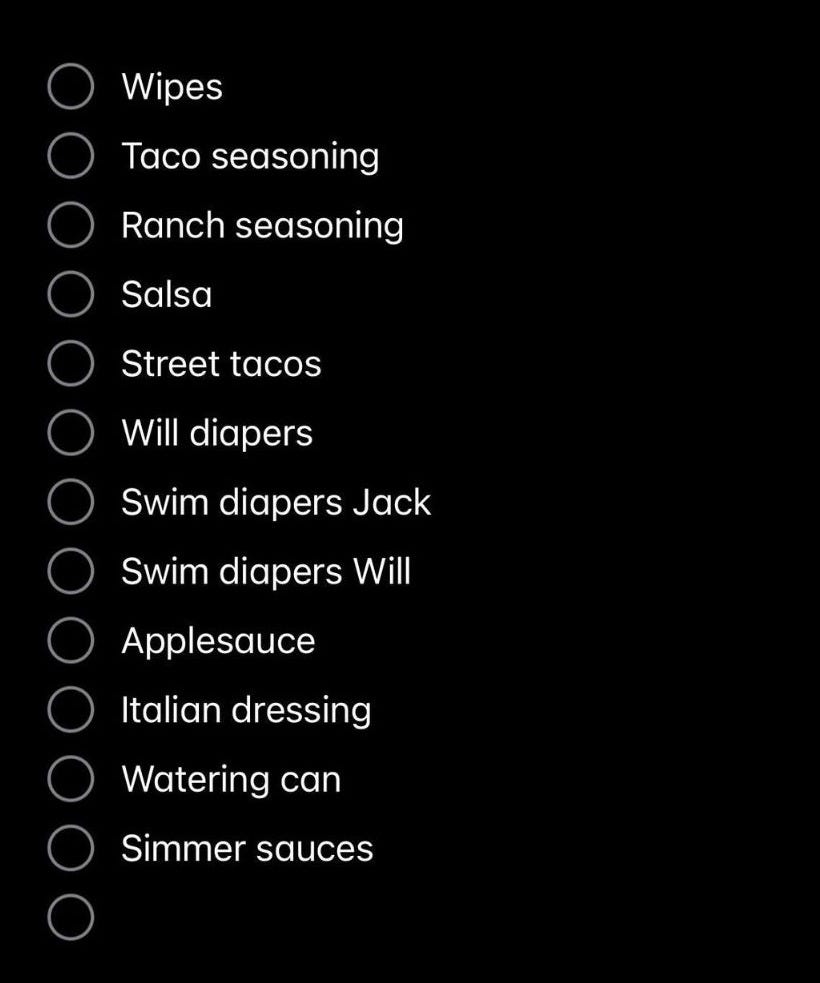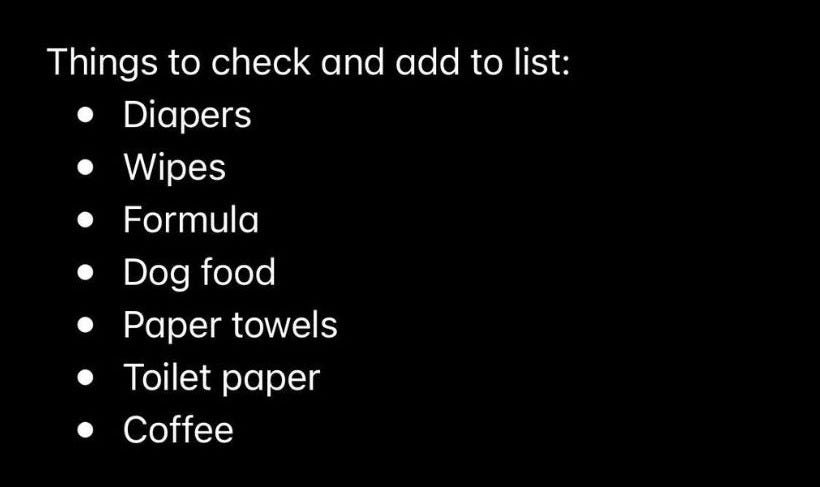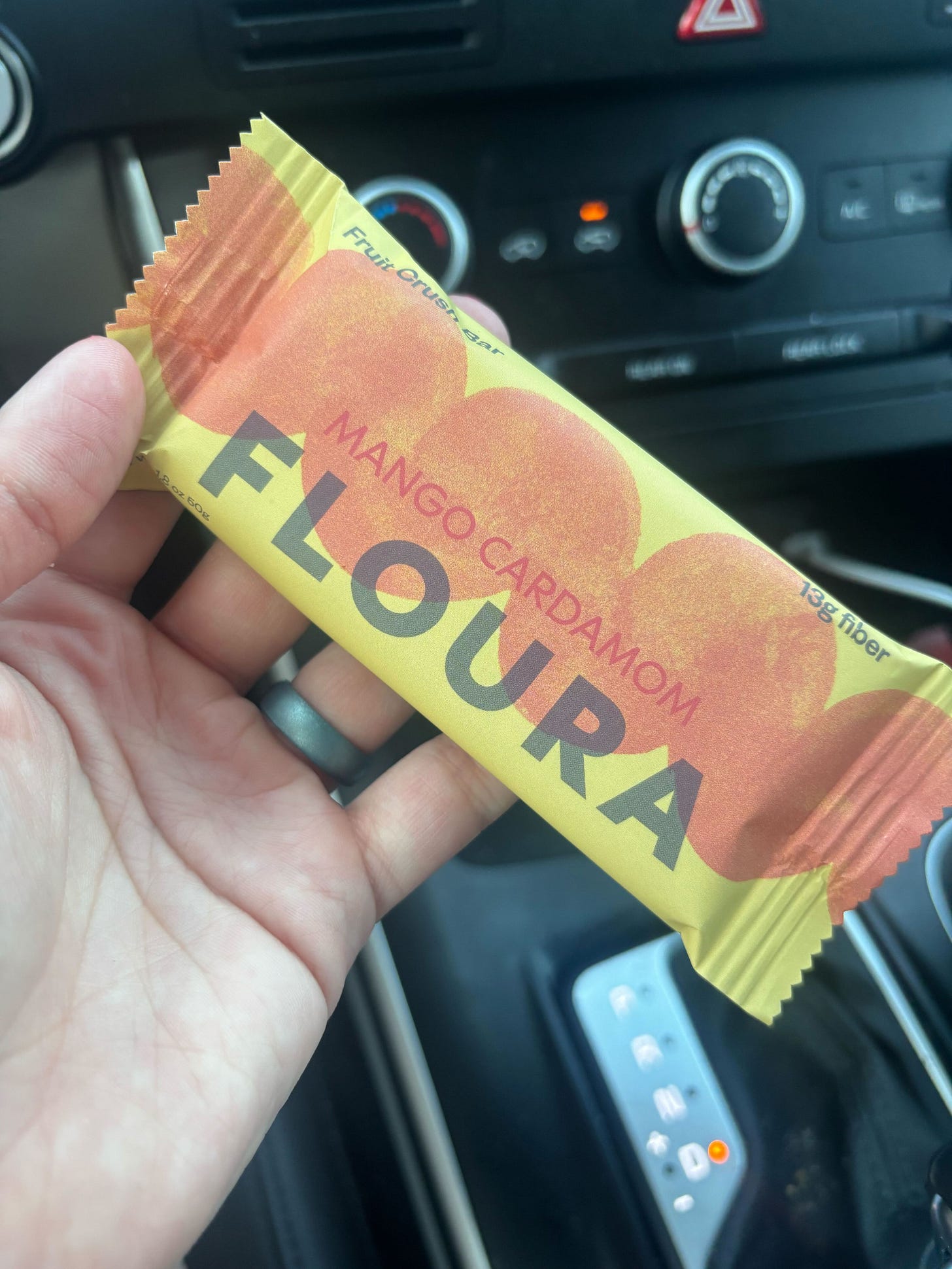You’re reading Playbooks & Priorities, a newsletter about working, parenting, and working parenthood.
Last year, I hit a wall with meal planning. I'd tried everything: beautiful meal planning apps with recipe integration, complex spreadsheets, even a paper planner dedicated solely to our dinners. Each system started with enthusiasm and ended the same way—abandoned after a few weeks, leaving me back at square one, staring into the fridge at 5pm, wondering what on earth to make for dinner.
The system that finally stuck? Plain old Apple Notes, inspired by a tip from the podcast "Didn't I Just Feed You" (which, if you're a parent trying to feed tiny humans daily, is definitely worth checking out).
That's right. The humble notes app that comes pre-installed on every iPhone became the solution to my meal planning woes. And in the process, it taught me something important about productivity both at home and work: sometimes the best solution is the one that you already have.
The "Dinners" Note: My Living Recipe Book
The cornerstone of my system is a single note titled "Dinners." It's essentially a running checklist of meal ideas that has evolved over months of use.
Here's how it works:
At the beginning of each week, I add 3-4 dinner ideas at the top of the note as unchecked items. These become my meal plan for the week.
As I make each meal, I check it off. But here's the genius part—I don't delete anything. Checked items simply move down the list. Over months of doing this, I've organically created a personalized database of meals that our family actually eats.
This isn't some aspirational list of Pinterest recipes I'll never make. It's a real-world record of dinners that have actually made it to our table, making it incredibly practical when I need inspiration.
My Weekly Planning Process
My planning starts with what we already have. Since we buy half a cow at a time, our freezer usually contains plenty of ground beef, steaks, and roasts. I typically plan at least two beef-based meals per week.
From there, I aim for variety—usually incorporating chicken one night, maybe fish (salmon or shrimp) another night, or a pasta dish to round things out.
One non-negotiable in our weekly lineup? Friday night is pizza night. It's a tradition we all look forward to and having this fixed point in our week actually makes the rest of the planning easier. (Pro tip: Having one consistent meal each week instantly reduces decision fatigue!)
When I feel stuck for ideas for the remaining nights, I don't have to scour cookbooks or websites. I simply scroll through my own "Dinners" note to see what we've enjoyed in the past. It's like having a customized cookbook of proven hits.
"Oh right, we haven't had those Asian-inspired beef bowls in a while," or "Last time I made that simple pasta with broccoli and sausage, everyone loved it." The inspiration is right there, based on our actual eating history.
The Grocery Note System: Three Parts, Zero Stress
The companion to my "Dinners" note is my "Grocery" note. This three-part note keeps our shopping organized without overcomplicating things.
Part 1: The Rules Section
At the top of my grocery note, I keep any current "rules" or reminders about our food situation:
For example, in January, we were trying to eat down our pantry and freezer stores, so I added a note: "JANUARY: Only buy fresh fruits and vegetables!" This helped us stay focused on using what we had while still eating healthily.
In summer months, I'll note when our CSA box is coming: "CSA delivery Thursday—check contents before shopping." This prevents me from buying duplicates of vegetables we're about to receive.
Part 2: The Active Shopping List
The middle section is my actual, dynamic shopping list:
Items get added here in three ways:
Throughout the week, as I notice we're running low
Based on the ingredients needed for my planned dinners
Regular staples we always need (milk, eggs, etc.)
I use the checklist feature so I can mark items off while shopping. After I get home and unpack, I delete all the checked items to clean up the list for next time.
Part 3: The "Things to Check" Section
The final section of my grocery note is possibly my favorite part:
This is my pre-shopping checklist for items that aren't always visible in my daily routine. These are typically bulk items stored in closets or the garage that multiple household members use. I might not notice we're down to our last box of diapers, but this reminder ensures I check before heading to the store.
The Secret Ingredient: Shared Notes
One key element that makes this system work so well is that these notes are shared between my husband and me. Since we're both iPhone users, our notes sync instantly.
This means if he finishes the last of the coffee, he can add it to our grocery list immediately. If I'm at the store and unsure if we need milk, I can text him to check the fridge, and he can update the note in real-time. No more "I thought YOU were picking up dog food" moments.
Why This System Works When Others Failed
When I reflect on why this simple system succeeded where more sophisticated options failed, several reasons stand out:
It's the default option. The power of Apple Notes is that it's already there—pre-installed, familiar, and requiring zero setup. I didn't have to download anything, create an account, or learn a new interface.
It's always with me. I don't need a separate app or special book—my phone is always in my pocket.
Zero friction. Adding an item takes seconds with no special formatting required.
It builds on reality. My dinner ideas come from actual meals we've eaten, not aspirational recipes.
It evolves organically. The system has naturally improved over time without any major overhauls.
It's collaborative. My husband and I can both contribute without complicated sharing setups.
The Work Connection: When Default Wins
The most effective workflows aren't usually the most sophisticated ones, but rather the simplest ones that people actually use consistently—often the default tools already at hand. A friend is using Google Tasks for things day-in-and-day-out because he’s already in his inbox all day, and it’s right there.
My dinner checklist is essentially a project database—current work at the top, completed work below, but still accessible for reference. It creates an "institutional memory" of what works.
The three-part grocery note parallels good workplace documentation:
Guidelines and policies (the rules section)
Active tasks (the shopping list)
Maintenance items that prevent future problems (things to check)
Most importantly, both systems acknowledge reality over idealized perfection. Just as my meal plan is based on dinners we actually eat rather than magazine-worthy creations, the best work systems accommodate how people actually behave, not how they "should" behave.
The Takeaway: The Power of Default Tools
The lesson I've learned is that the tool you'll actually use consistently beats the theoretically perfect tool every time. And often, the tool you'll use consistently is the one that's already there, requiring the least effort to adopt.
There's a reason tech companies fight so hard to be the default option on your devices—they know the massive advantage that comes with being pre-installed. I've learned to harness this power for my own benefit.
This applies whether you're planning meals or managing complex work projects. Before downloading the latest productivity app or implementing a new system, ask yourself: "Could I accomplish this with tools I already have and use daily?"
Try It Yourself
If you'd like to try my system, here are templates to get you started:
Dinner Note: Set up a checklist with your first week's dinners at the top. As you make them, check them off and add new ones at the top. Over time, you'll build your own personalized database.
DINNERS
□ Dinner Idea #1
□ Dinner Idea #2
□ Dinner Idea #3
Grocery Note:
CURRENT GUIDELINES:
[Any seasonal notes or reminders]
SHOPPING LIST:
□ Item 1
□ Item 2
□ Item 3
THINGS TO CHECK:
□ Paper towels
□ Toilet paper
□ Other household essentials
I'd love to hear what simple systems work for you! Have you found your own "Apple Notes solution" to a persistent problem? Sometimes the best productivity tool isn't the fanciest—it's the one you'll actually use.
The Extra Point
The Extra Point is a segment where I highlight a brand or product I’ve tried recently with an honest review. We’ll try it and see if it scores…
Fiber is the new "trendy" thing- or at least it feels like it. At the price of $32.99, Floura bars might seem a bit high, but each bar packs 13 grams of fiber from 12 whole plants, far surpassing typical fiber bars. These bars are a fantastic option for anyone looking to improve gut health, support overall well-being, and enjoy a truly flavorful snack. Plus, their commitment to saving 100 million pounds of produce from landfills makes them a choice you can feel good about. I loved the flavor, but the cost will be a sticking point.

